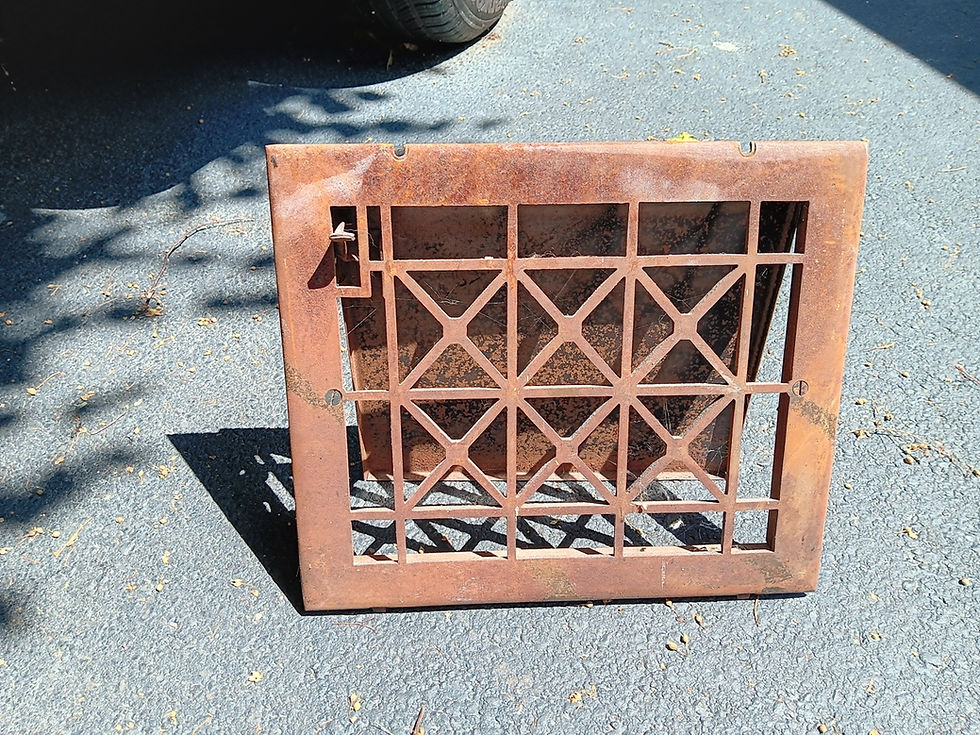Ideas from Ed: Hydrant woes
- LCP4P

- Aug 1, 2020
- 4 min read
Updated: Nov 23, 2020
Ed is a do-it-yourselfer who is happy to share some of his ideas and experiences in this monthly column.
This month: Hydrant woes
I know you all think I must dream up “jobs to do” to write these monthly columns, but I assure you, they are just documentation of projects I’m routinely working on. Some are more suited to “restoration and preservation” while others may just be “how I did it” stories. This month is probably the latter since many readers won’t have a yard hydrant that needs replaced. Read ahead anyway, because as it’s said, a mind is a terrible thing to waste! LOL!
A yard hydrant is simply a point of water supply away from the house wall (where an outside spigot or faucet would be) but there is one big difference. Also known as freeze-proof hydrants, the supply is from a buried water line to a standpipe and shutoff, but with the real shutoff and a drain at the base, below the frost line. That drain lets the water in the standpipe slowly trickle into the ground, emptying the part above ground, so nothing can freeze.
Here are a couple of old pictures showing this month’s project from two different angles:


Generally speaking, these require little maintenance, sometimes needing an “o-ring” or seal or minor adjustment at the head. There’s a long rod within the vertical pipe, though, that connects to a rubber plug at its base. That’s where the real action is, opening and closing below the frost line. If that rubber plug needs replaced, it’s sometimes possible to slip that whole inner rod up and out, replace the plug, and re-insert things. Be sure, though, to pull it straight up (with the water line turned off, of course!) and NOT “unthread” it. Doing so could leave the rubber plug stuck in the bottom with little hopes of retrieval. In my case, the bottom of the plunge rod had corroded enough that the threads were not gripping the plug, and despite trying several methods (like turning the water on so the pressure would push the plug out) the plug could not be removed. So, the entire thing had to be dug up and replaced.
As you can see in these photos, the hydrant was embedded in a concrete pad, which of course had to be broken up:



Guessing that the supply line would be about 30” down, I dug just enough to locate the “elbow up” onto which the hydrant threaded. Actually, it threaded onto a ¾ inch pipe nipple standing vertically from the elbow. I sprayed the fitting with penetrant and let things sit overnight before trying to twist the hydrant off with a large pipe wrench. As you can see in the next picture, I also uncovered a surprise – an electrical conduit apparently was run in the same trench as the water line. Digging by hand as I was, it was easy to avoid damaging things or being unsafe.

Here’s the main underground unit on the old hydrant, and the where the plug is stuck in the bottom, although you really can’t see it well:


If you’re replacing the whole unit, as I was, it’s extremely important to understand hydrant measurement terminology. The “normal” installation assumes about 2 feet sticking up out of the ground, and the hydrant length is the buried portion. Thus, a 2-foot hydrant is actually 4 feet long, a 3-foot hydrant is 5 feet long, etc. You can vary the above-ground height any way you want as long as you figure it this way: ABOVE GROUND HEIGHT + BURY DEPTH TO WATER LINE – 2 FEET. For example, if you want the hydrant head about 3 feet above ground, and your water line is 3 feet deep, you’d order a 4-foot hydrant.
The hydrant I purchased is made by Simmons. (I’ve said it before, but I’m NOT endorsing any particular brand. I’m just showing you what I used.) Simmons offers 3 versions of each hydrant – one California-specific, an imported model, and a “domestic” (made in the USA) version. I bought the made-in-USA version. Here’s the box:

Here’s a close-up of the hydrant head:

And here’s the bottom, showing the plug location and the weep-type drain, which empties the standpipe after the lever-top action is closed:


After wiping the old pipe nipple threads clean and smearing on a Teflon-based sealant (better than Teflon tape), in literally 5 minutes the new hydrant was in place:

I emptied a bag of pea gravel around the base, where the drain is, to assure its function. I always try my best to do things the right way, so after a few inches of backfill, I added a stream of red tape reading “CAUTION BURIED ELECTRIC LINE” so that if the system is dug up in the future, there will be some warning about that electrical conduit so nearby.

For heaven’s sake, if you’re doing something like this, at least make sure the unit is plumb! That way, it will look like you knew what you were doing when installing it:

I backfilled with the soil removed during the excavation, and will let it settle a bit. Then, the plan is to make a new pad using old bricks (currently stockpiled near my garage) rather than to pour a concrete one.
Here’s evidence that things went right, as my son Brian checks for a successful flow:

I hope all your projects go well. Thanks for reading, and happy restoring!
Ed




Comments